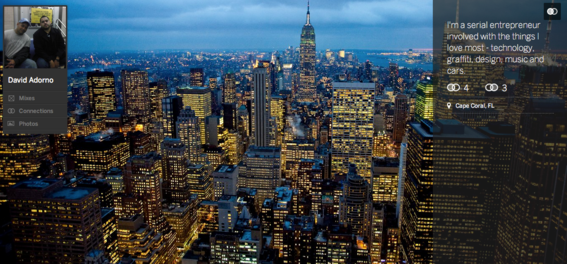Myspace is one social network I thought I would never address again, especially in a business context.
The site became the most popular social network in 2005 and surpassed Google as the most visited website in 2006. In later years, use of the site quickly declined due to the growing popularity of Facebook. Myspace was jointly purchased in 2011 for $35 million by digital media company Specific Media and musician-turned-entrepreneur Justin Timberlake.
Myspace is making a comeback thanks largely to Timberlake’s leadership. Some suggest it could be useful for business. It is experiencing double-digit growth, outpacing that of Tumblr and Google+, according to comScore’s latest figures.
Companies, other than those in the music industry, have yet to embrace Myspace with the same fervor as they did with Pinterest or even Google+. A search for well-known retail brands, for instance, returns empty-handed. The reason could be that Myspace became available to the public just last month. Prior to that, access was by invitation only.
Business Use of Myspace
Clues to how retailers could use Myspace can be found based on its distinct purpose, targeted user base, and interface design.
Social Entertainment Network
Myspace, which bills itself as a “social entertainment destination powered by the passion of fans,” is a network focused on music, celebrities, television, movies, and games, with music being the predominant category. Licensing deals were struck with a number of record labels that enable users to add songs and make collections of their favorite music.
Users are asked to identify themselves by one or more of the following account types when they sign up for Myspace: Musician, Photographer, Filmmaker, Curator, Designer/Creative, Entertainer, DJ/Producer, Brand, Venue, Writer/Journalist, Promoter, Fan, Comedian.
Myspace account types relate to arts and entertainment.
With the possible exception of “brand,” each has a relationship to the arts and entertainment. This may limit the site’s appeal to retailers other than those that sell art, entertainment, pop culture, and fashion-related products such as clothing and jewelry.
The site’s user base consists primarily of teens and young adults, so merchants whose products appeal to that demographic may also find value.
Myspace makes no specific provision for brands, unlike social Facebook, Google+ and Pinterest. However, the site does not prohibit business use.
Profile Interface Design
The site features a modern, graphically intensive design that is in keeping with the current visual approach to the web popularized by Pinterest.
A large cover image serves as the centerpiece of user profiles and is something businesses could easily use for branding and promotion.
A large cover image is the centerpiece of the interface design.
Updates, which are limited to 150 characters and an image, are in a Pinterest-like array. Links can be included in the text portion of updates, which could benefit merchants who wish to drive traffic back to their ecommerce sites.
The new design resembles Pinterest.
One feature unique to Myspace is the ability to add a song to an update, so long as it is contained within the site’s extensive music library. Businesses could make use of this feature to add contextual flavor and a bit of personality to updates.
Users must scroll horizontally to see updates.
Something that takes getting used to and that may be off-putting to some is the need to scroll horizontally to see updates. It feels as if the interface was designed more for use by tablets than desktop or laptop computers. This is not a bad thing when one considers the rapid adoption rate of mobile technology and may spur its growth.
Conclusion
Due to its emphasis on entertainment and focus on a younger demographic, Myspace may have limited appeal to retailers, other than those in the categories mentioned above.
Of course, the same thing was said of Pinterest in its early days.





